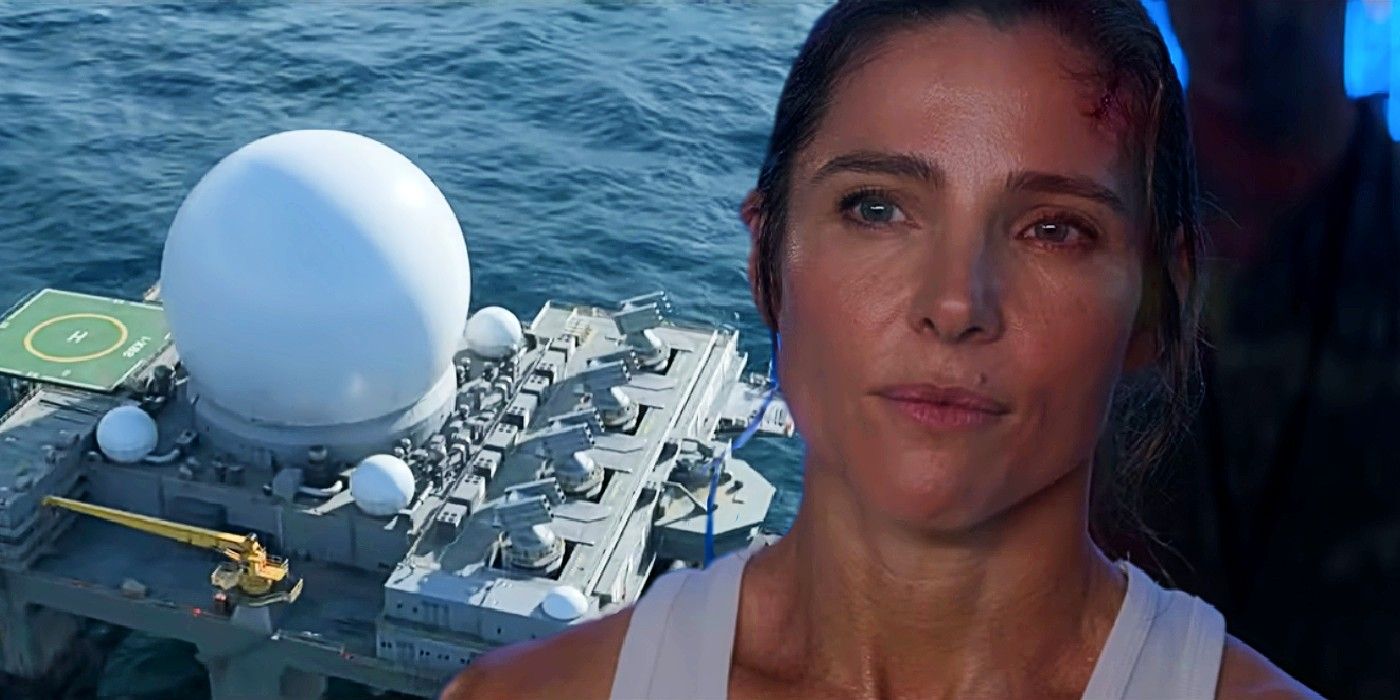
Interceptor Fact Check: How Many Interceptor Bases Does The U.S. Have?
Warning: SPOILERS for Interceptor ahead.
Netflix’s Interceptor explores what would happen if terrorists captured and disabled U.S. interceptor bases to launch a missile attack on the country; here’s how accurate the movie is and how many interceptor bases the U.S. actually has. Interceptor was co-written and directed by action-thriller author Matthew Reilly, and it stars Elsa Pataky as the protagonist and Army captain J. J. Collins and Luke Bracey as terrorist leader Alexander Kessel. As an attack is launched on Alaska’s Fort Greely interceptor base at the beginning of the movie, Pataky’s J. J. soon finds herself being the United States’ last line of defense from nuclear ballistic missiles in the seaborne interceptor platform SBX-1.
Unlike Red Notice, whose budget was among Netflix’s biggest, Interceptor’s budget had to be kept under $15 million being Reilly’s directorial debut. Reilly came up with the core idea at the base of Interceptor when it became clear he wouldn’t be able to adopt any of his novels as they would have needed blockbuster funding to be properly adapted into movies. Interceptor managed to be action-packed, nevertheless, although it was shot in a limited number of locations – largely one set – and in slightly more than one month. Netflix’s action-adventure film might have left critics and some viewers unamused, judging by the low Rotten Tomatoes scores, but it also soared to Netflix’s Global Top 10 list at number 1 the weekend after its release, being viewed for a total of 35.6 million hours.
Interceptor’s movie premise revolves around J.J. having to defend SBX-1 because it is the U.S.’s last defense, and if it falls, hostile missiles will hit American targets unstopped. In reality, though, the U.S.’s Ground-Based Midcourse Defense, which is the anti-ballistic missile system that is supposed to intercept hostile warheads and destroy them before they reach the target, has 44 ground-based interceptors. They are deployed on military bases in the states of Alaska and California, with 20 more ground-based interceptors being readied for use by 2023, bringing the total number of interceptors to 64.
Interceptor’s Bases Fact Check: How Accurate Is It?

While an isolated seaborne floating platform answering to the name SBX-1 exists in real life, it’s not armed with interceptor missiles as Interceptor depicts. Indeed, due to the nature of Interceptor being a movie about a lone hero in an isolated setting defending it from a group of villains, similarly to Bruce Willis’ famous franchise Die Hard, it makes sense that interceptor missiles would also be available on the sea platform. In reality, the Sea-Based X-band Radar (SBX-1) is a one-of-a-kind mobile early-warning radar that can be moved to areas where enhanced missile defense is needed. Like fixed radars, the SBX-1 can only cover a limited area, but as it’s built on a vessel that can be moved, that mitigates the coverage limitation; the same can not be said for fixed radars.
Ultimately, Interceptor finds J. J. succeeds at launching interceptor missiles that destroy all hostile missiles about to hit U.S. soil. While fortunately, nothing of the sort has happened in reality; based on the tests conducted between 1999 and 2019, the Ground-Based Midcourse Defense proved to have a success rate of 55%. While not being particularly realistic, Interceptor still proves to be an entertaining movie that Netflix viewers seem to be thoroughly enjoying.































![iFi's GO Bar Kensei Dongle DAC Supports K2HD Technology With Some Samurai Swagger [Updated] iFi's GO Bar Kensei Dongle DAC Supports K2HD Technology With Some Samurai Swagger [Updated]](https://i0.wp.com/cdn.ecoustics.com/db0/wblob/17BA35E873D594/33FF/45A11/QTXOLJR4xDKSNMMk2WlTgjaIlvSgcYpeU1xJzUwIoYs/ifi-go-bar-kensei.jpg?w=768&ssl=1)
























